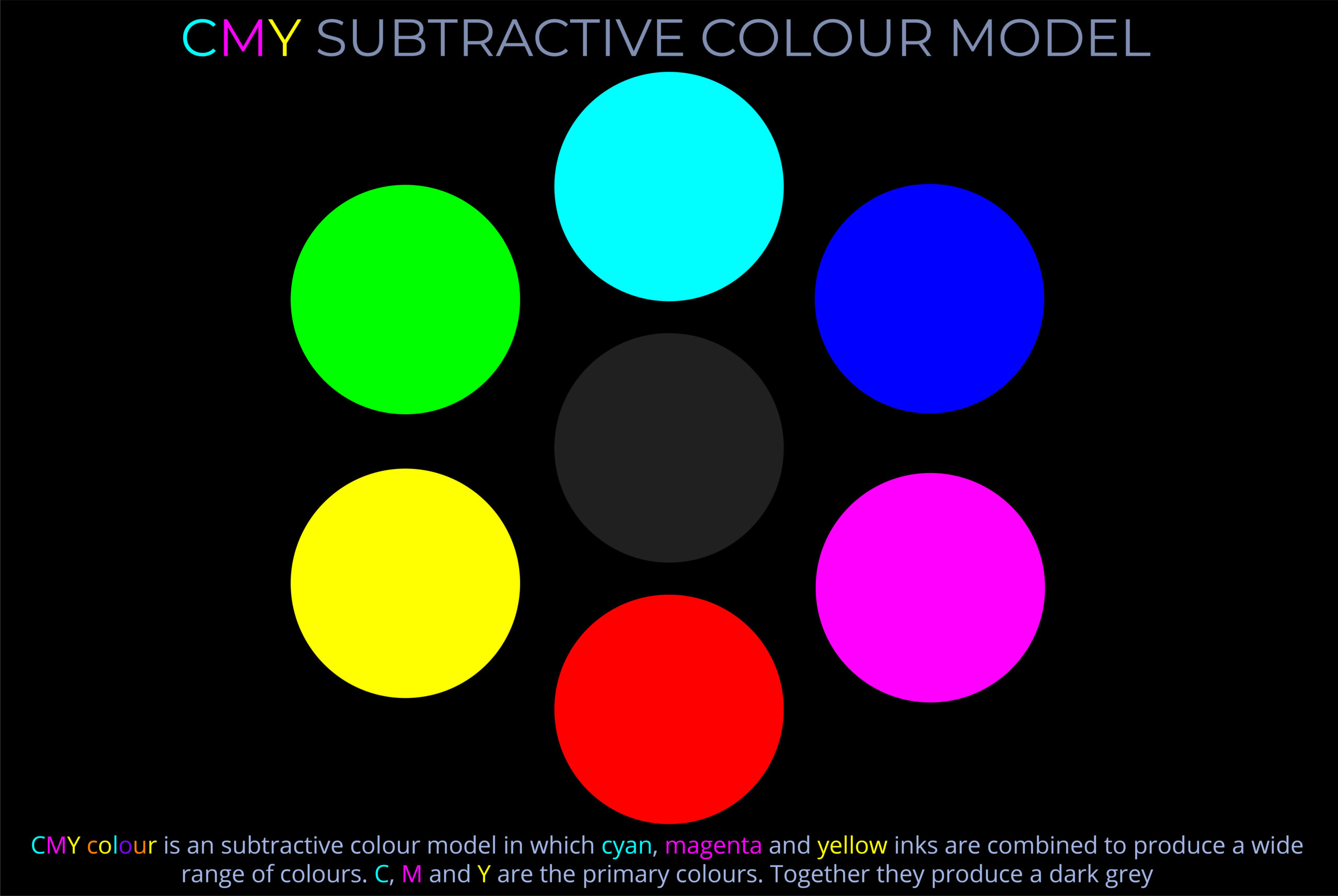Digital printing uses the CMYK colour model to enable cyan, magenta, yellow and black inks to be used to output digital files onto paper and other sheet materials.
- Digital printers typically overlay highly reflective white paper with cyan, magenta, yellow and black inks or toner.
- CMYK is a subtractive colour model suited to working with semi-transparent inks.
- Printing has a smaller gamut than TV, computer and phone screens which rely on light emission, rather than reflection of light off sheets of paper.
- Digital displays produce comparatively brighter colours than printers because the amplitude of each wavelength of light is larger than can be achieved by a printer.
- Digital printers produce dull and less intense colours than digital displays because the amplitude of each wavelength of light is smaller when light is reflected off paper through inks.
- A display device, such as a computer screen, starts off dark and emits red, green and blue light to produce colour.
- CMYK inks are the standard for colour printing because they have a larger gamut than RGB inks.
- Highlights are produced on digital printers by printing without black to allow the maximum amount of light possible to shine through and reflect off the paper.
- Mid tones rely on the brightness and transparency of the inks and the reflectivity of the paper to produce fully saturated colours.
- Shadows are produced by adding black to both saturated and desaturated hues.
- All modern printers have built-in colour profiles that allow both device-dependent and device-independent RGB colour spaces to be converted to CMYK.
References
- https://en.wikipedia.org/wiki/Digital_printing

